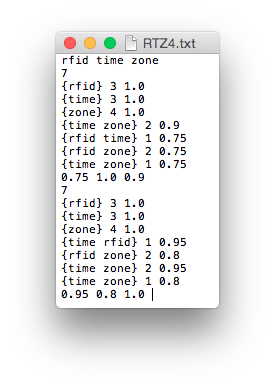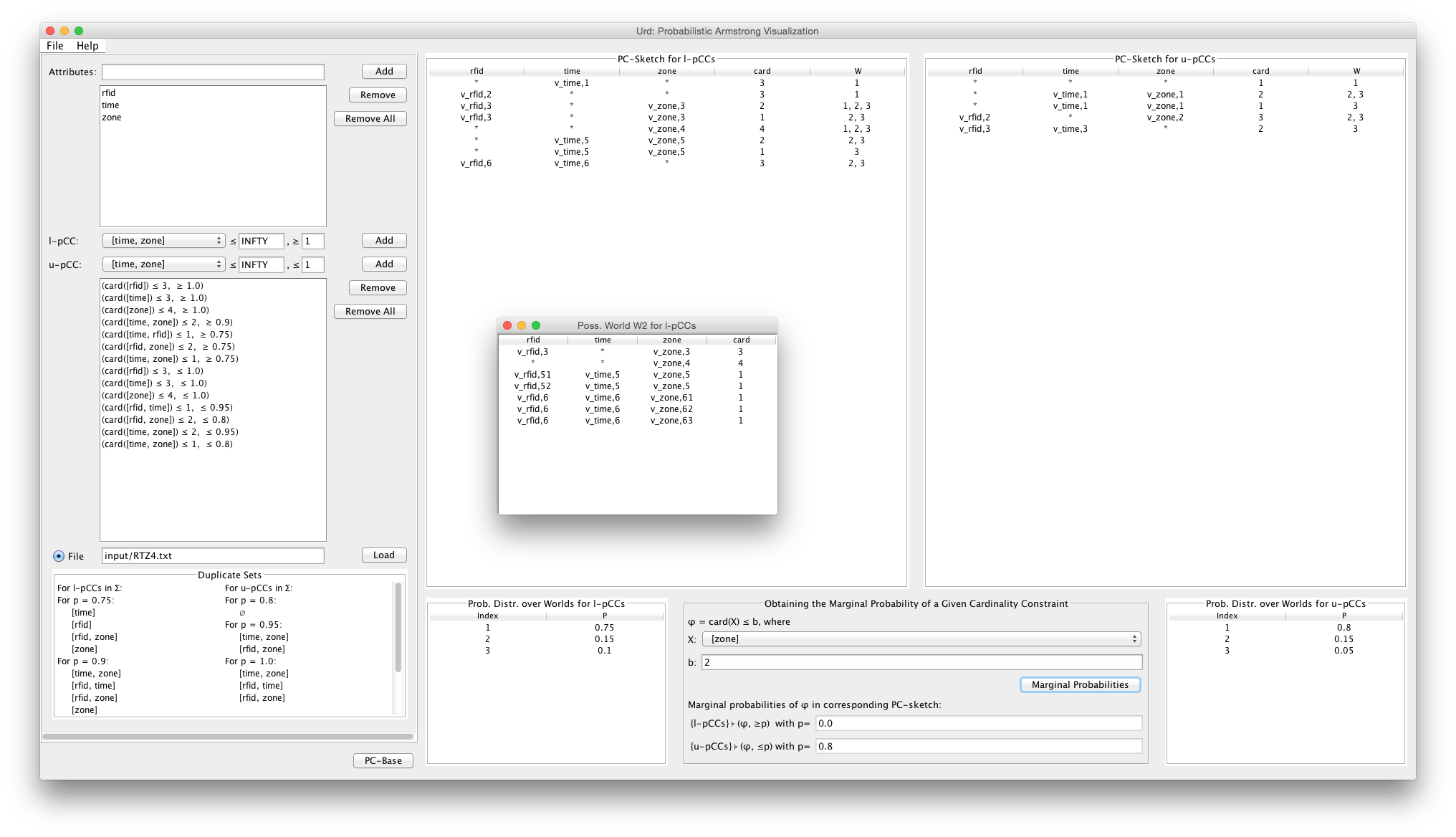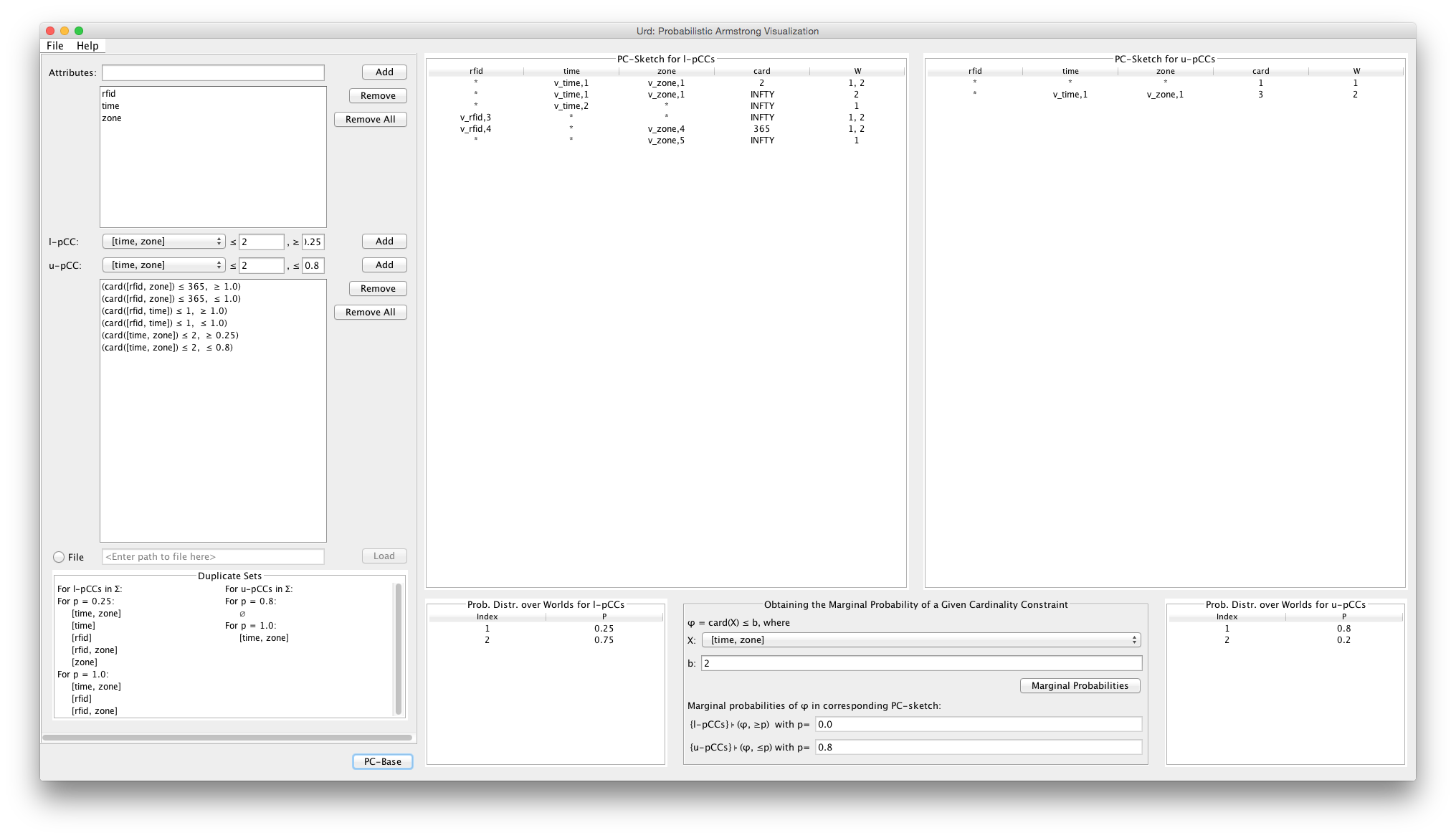Urd
A Data Summarization Tool for the Acquisition of Meaningful Probabilistic Cardinality Constraints (pCCs)
Download and Input File Format
A Data Summarization Tool for the Acquisition of Meaningful Probabilistic Cardinality Constraints (pCCs)
Download and Input File Format
If you would like to try out Urd yourself, download it here.
Note: The download attribute is not supported in IE, Safari or Opera version 12 (and earlier). Please use Mozilla Firefox or Chrome for best results. Also, Urd is implemented in Java 1.7 and requires JRE 1.7 or later to run on your local machine.
The download comes with a set of pre-written inputs, which are the ones used to obtain the screenshots below. Hence you should get the same results as the ones displayed on this page, up to isomorphism. Feel free to use these inputs as a template to write your own.

Here is an example found in the input folder: RTZ4.txt.
As you can see, input files must follow a strict format, described below.
- Line 1 lists the attributes, separated by a space.
- Line 2 indicates the number $M$ (which can be $0$) of l-pCCs $(card(X) \le b, \ge p)$ that will be listed next.
- The next $M$ lines contain one l-pCC each, written in the form: {Attr1, ...} b p.
- The line $M+3$ is the list of probabilities occurring in the above l-pCCs, including $1.0$.
- Line $M+4$ indicates the number $N$ (which can be $0$) of u-pCCs $(card(X) \le b, \le p)$ that will be listed next.
- The next $N$ lines contain one u-pCC each, written in the form: {Attr1, ...} b p.
- The final line is the list of probabilities occurring in the above pCCs, including $1.0$.
Though $0$ should be a legal probability entry by definition, we exclude it here for the l-pCCs as all l-pCCs with probability $0$ are trivially satisfied.
The latest version of Urd allows you to export to a file the following list of elements:
- The set of pCCs you have populated with Urd into a .txt file as a valid input file.
- For either the set of l- or u-pCCs:
- The list of duplicate sets found by Urd into a .txt file.
- The pc-sketch created by Urd for the chosen subset of pCCs into a .csv file (which can then be opened in Excel), with or without the probability distribution table (also in a .csv file).
Hence all results can be saved for further inspection and in particular it makes creating a valid input file much easier.
Note: Any feedback or suspected bug(s) can be reported to myself, Tania Roblot.
Screenshots
Here we display a selection of screenshots of Urd in action.
Example 1
In this example, $R = \{rfid, time, zone\}$ and runs the input file RTZ4.txt. The set $\Sigma$ of pCCs is displayed in the screenshot. The possible world of index $2$ was selected from the table of probability distribution over the worlds. Next the last two rows of $W_2$ were expanded by double-clicking each of them. Finally the implication problem inquiry box can also be seen as having been used to inquire about the marginal probabilities of the cardinality constraint $card(Zone) \le 2$ in the PC-base for $\Sigma$, which are $0$ in the PC-sketch for the l-pCCs and $0.8$ in the PC-sketch for the u-pCCs.

Example 2
In this example, $R = \{A1, A2, A3\}$ and does not run a given input file, the values were entered manually for the purposes of a demo. Here the implication problem was also used to inquire about the marginal probabilities of $card(Time, Zone) \le 2$.

Introduction Video
Here is a demo video to illustrate how this tool can be used to consolidate a set of perceived meaningful pCCs.
Below is a shorter version of this demo, which was edited for ICDE'17. Thanks for your attention.
Urd_Demo from Tania K Roblot on Vimeo.